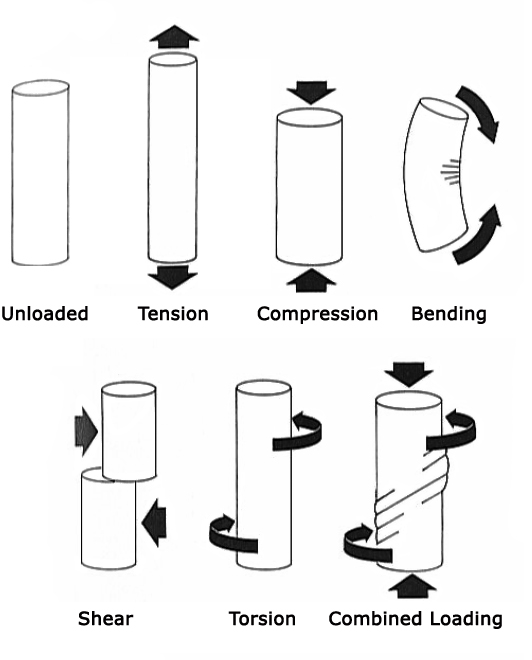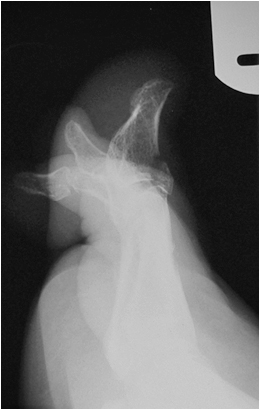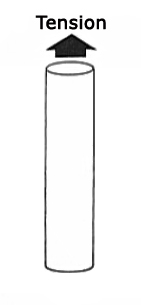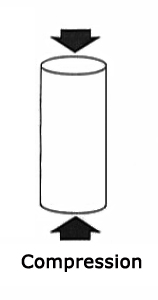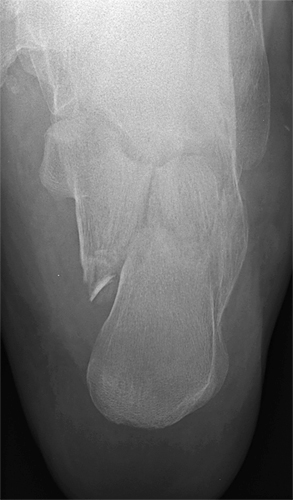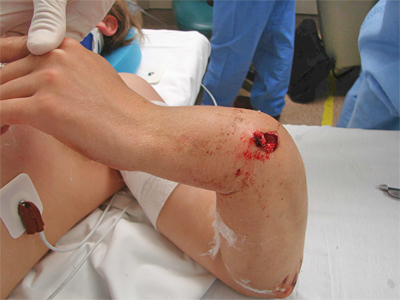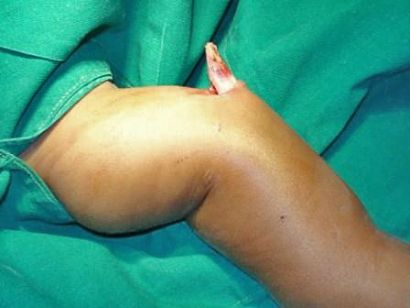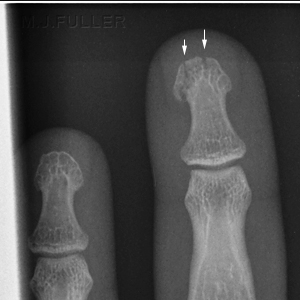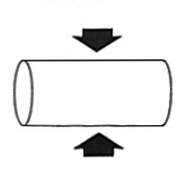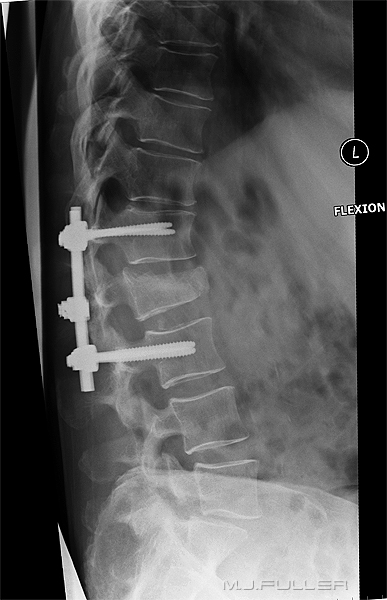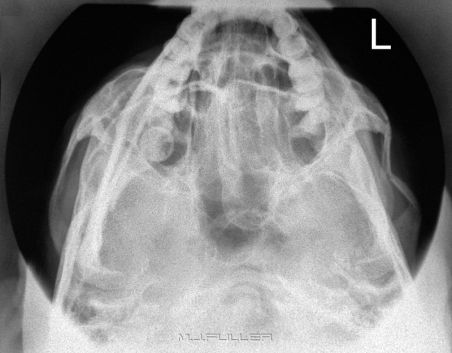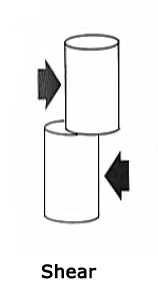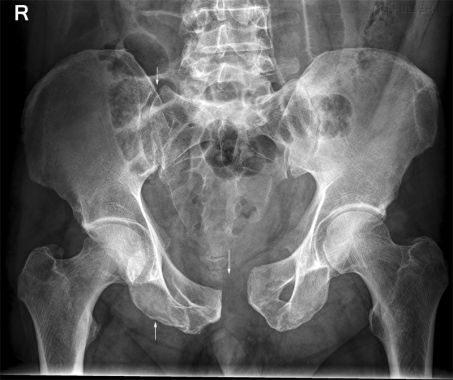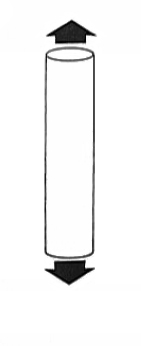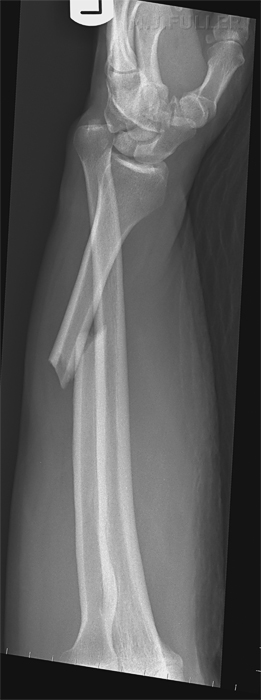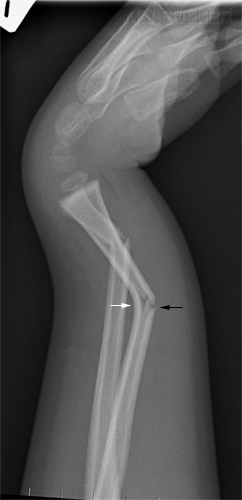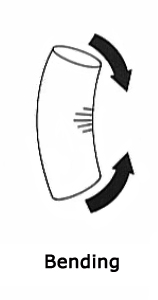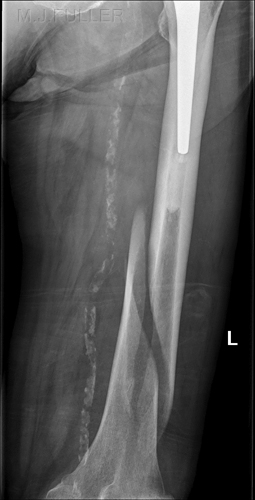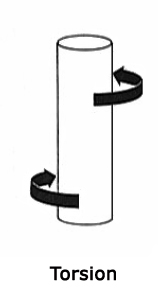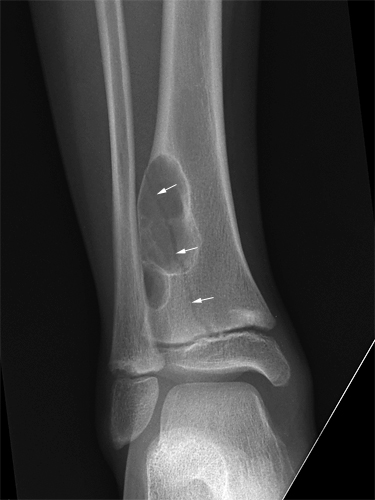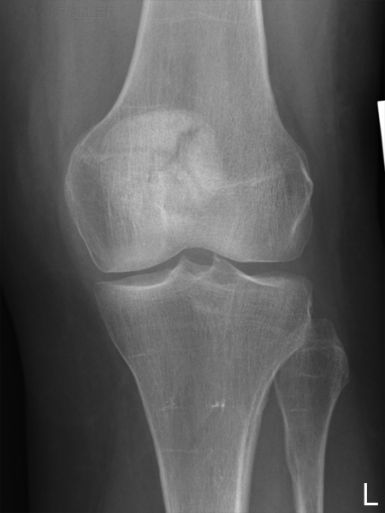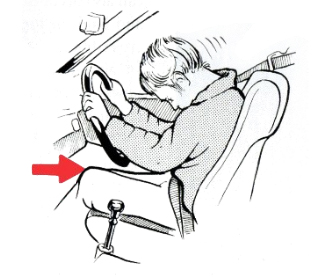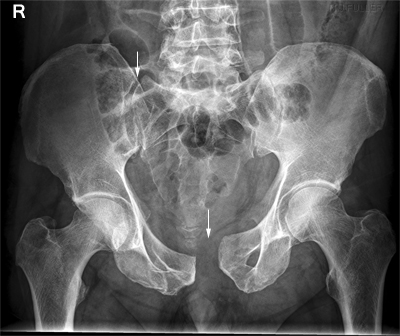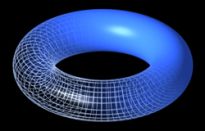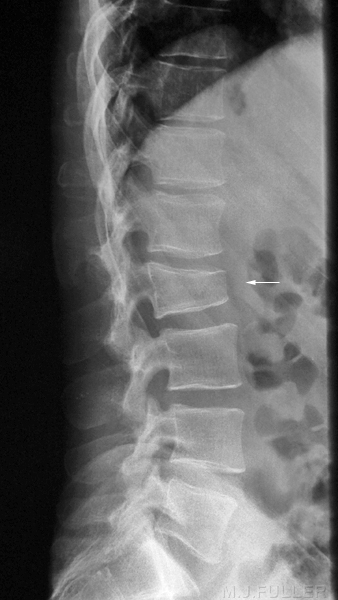Fracture Types and Mechanisms of Injury
Jump to navigation
Jump to search
Introduction
Butterfly Fracture
Chondral, osteochondral and subchondral Fractures
Comminuted Fracture
Compound Fracture
Crush Fracture in Longbone
Crush Fracture in Spine
Depressed Fracture
Diastasis
Fracture-Dislocation
Greenstick Fracture
Impacted Fracture
Incomplete Fracture
Intra-articular Fracture
Spiral Fracture
Pathological Fracture
Stellate Fracture
Stress fracture
Subluxation (joint)
Torus Fracture
Wedge Fracture
Still to come
....back to the Applied Radiography home page
Introduction
Mechanisms of InjuryKnowledge of fracture types and mechanisms can be useful for a variety of reasons.
- You will tend to look for certain types of fractures if you know the patient's mechanism of injury.
- You are more likely to look for associated fractures/co-morbidity
- You can describe the fracture to another health professional with greater accuracy and economy
Avulsion Fracture
Buckle Fracture
Fracture Type Description Mechanism Avulsion fracture fragments tend to be small bone fragments. They are often at the ends of long bones and tend to be adjacent to joints. Anywhere that there is a tendon or ligament attachment is a potential site for an avulsion fracture.
Common avulsion fractures are the ulna styloid fracture (associated with a Colles fracture) and fractures of the base of the 5th metatarsal associated with ankle inversion injuries.An avulsion fracture occurs when an injury causes a ligament or tendon to tear off (avulse) a small piece of a bone to which it's attached. The mechanism is usually a tension force which pulls the avulsed fragment off the bone.
Fracture Type Description Mechanism Buckle Fracture
A buckle fracture is an incomplete fracture in which an isolated radius of the cortex of the bone is buckled.
Butterfly Fracture
Fracture Type Description Mechanism
Chondral, osteochondral and subchondral Fractures
Comminuted Fracture
Fracture Type Description Mechanism
This is a comminuted fracture of the calcaneum caused by a fall from a height (so-called lover's fracture or Don Juan fracture)
Memory aid- just think of lots of minute pieces.
Compound Fracture
Fracture Type Description Mechanism
The finding of compound fracture is important. Compound fractures have a higher risk of infection and are usually given a higher priority for surgical treatment.
Below
Fractures of the forearm and humerus with a bone fragment penetrating the skin.
<a class="external" href="http://www.purepainracing.com/images/jake_wrist_5_.jpg" rel="nofollow" target="_blank">
</a><a class="external" href="http://www.purepainracing.com/images/jake_wrist_5_.jpg" rel="nofollow" target="_blank">http://www.purepainracing.com/images/jake_wrist_5_.jpg</a><a class="external" href="http://www.airahospital.org/?cat=14" rel="nofollow" target="_blank">http://www.airahospital.org/?cat=14</a>
Memory aid- compound fractures compound a bad situation!
Crush Fracture in Longbone
Fracture Type Description Mechanism
Crush Fracture in Spine
Depressed Fracture
Fracture Type Description Mechanism
Diastasis
"Fracture" Type Description Mechanism A diastasis is an abnormal separation of two anatomical structures that are normally located together. This pelvis image demonstrates a iastasis of the symphysis pubis and the right sacroiliac joint Mechanism of injury for diastasis would include shear and tension.
Fracture-Dislocation
Fracture Type Description Mechanism
The image shown (left) is a Galeazzi fracture characterised as a fracture of the distal third of the radius and a dislocation of the distal radio-ulnar joint (DRUJ)
Greenstick Fracture
Impacted Fracture
Fracture Type Description Mechanism Incomplete Fracture
Incomplete Fracture
Intra-articular Fracture
Fracture Type Description Mechanism
Spiral Fracture
Fracture Type Description Mechanism
This is a spiral fracture of the mid/distal 1/3 of the femur.
Pathological Fracture
Stellate Fracture
Fracture Type Description Mechanism Stellate fractures are most commonly associated with the patella. The term stellate refers to the fracture being star-shaped with the fracture lines radiating outwards from a central point. Stellate fractures could occur when any plate-like bony structure receives a sufficiently large (localised) blow. Other anatomical regions that can demonstrate stellate fractures are the skull and acetabulum.
<a class="external" href="http://www.scribd.com/doc/19677370/fractures" rel="nofollow" target="_blank">adapted from http://www.scribd.com/doc/19677370/fractures</a>
Stress fracture
Fracture Type Description Mechanism
Subluxation (joint)
Torus Fracture
Fracture Type Description Mechanism
<a class="external" href="http://en.wikipedia.org/wiki/Torus" rel="nofollow" target="_blank">http://en.wikipedia.org/wiki/Torus</a>
Wedge Fracture
Still to come
- Longitudinal fracture
- transverse
- oblique
- bowing
- impacted
- epiphyseal
....back to the Applied Radiography home page
